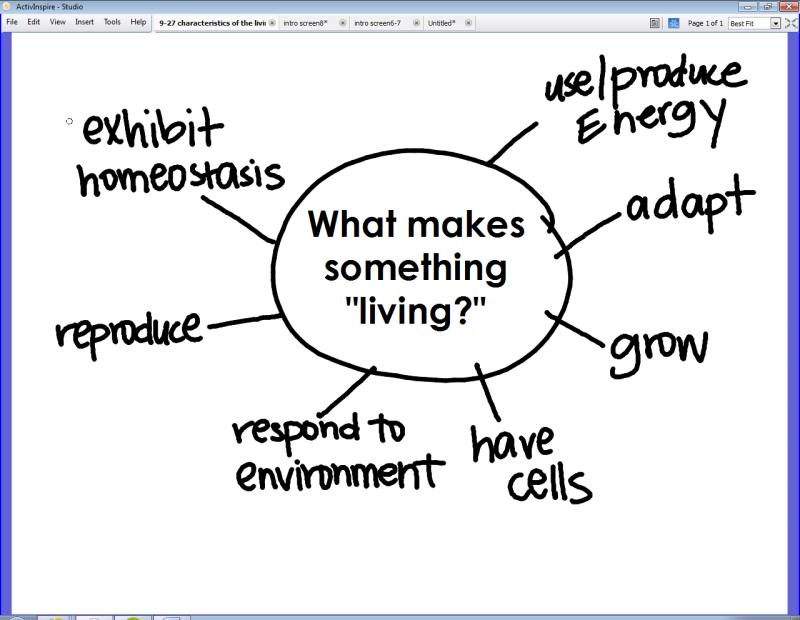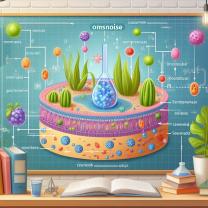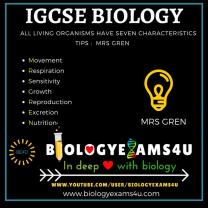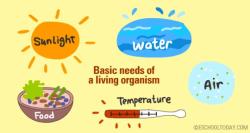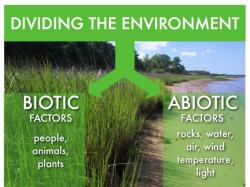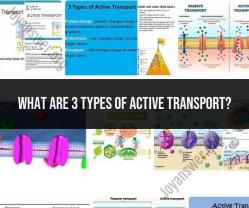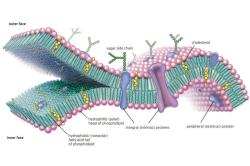What are the basic characteristics of life?
The fundamental characteristics of life are the essential traits that define living organisms. While there may be variations among different life forms, the following characteristics are generally considered to be fundamental:
Cellular Organization:
- All living things are composed of one or more cells, which are the basic structural and functional units of life. Cells carry out the processes necessary for an organism's survival.
Reproduction:
- Living organisms have the ability to reproduce, producing offspring that share similar characteristics with their parents. Reproduction ensures the continuation of the species.
Metabolism:
- Metabolism involves the chemical processes within a cell or organism that are necessary for life. These processes include obtaining and utilizing energy, as well as the synthesis and breakdown of molecules.
Homeostasis:
- Homeostasis is the ability of an organism to maintain internal stability and balance in response to external changes. This ensures that the internal conditions remain within a narrow range suitable for life.
Response to Stimuli:
- Living organisms can respond to stimuli from their environment. This responsiveness allows them to adapt to changes and challenges in their surroundings.
Growth:
- Living organisms can grow and develop. Growth involves an increase in size or number of cells, and development refers to changes in the overall structure and function of an organism over time.
Evolution:
- Living organisms evolve over time. This involves changes in the genetic makeup of a population over successive generations, leading to the development of new species.
Heredity:
- Living organisms possess genetic material (DNA or RNA) that is passed from one generation to the next. This genetic information contains instructions for the development, functioning, and traits of the organism.
Adaptation:
- Living organisms have the ability to adapt to their environment over time. This adaptation allows them to survive and thrive in various ecological niches.
Movement:
- While not all living organisms exhibit movement, it is a characteristic of many. Movement can involve changes in position, internal movement of structures within cells, or locomotion.
These characteristics collectively distinguish living organisms from non-living matter. It's important to note that individual organisms may exhibit these traits to varying degrees, and not all characteristics may be evident in every living entity. Additionally, viruses, while possessing genetic material and the ability to reproduce, are often not considered living organisms because they cannot carry out metabolic processes independently and rely on host cells for reproduction.
- Defining characteristics that classify something as a living organism:
Living organisms are complex and dynamic entities that share several fundamental characteristics that distinguish them from non-living matter. These defining characteristics include:
Order: Living organisms exhibit a high degree of internal order and organization, from the intricate structure of cells to the complex organization of tissues, organs, and systems.
Sensitivity or response to stimuli: Living organisms can detect and respond to changes in their internal and external environments. This ability to sense stimuli allows them to adapt to their surroundings and maintain homeostasis.
Reproduction: Living organisms have the ability to produce new individuals, ensuring the perpetuation of their species. This process involves the transfer of genetic information from parent to offspring.
Growth and development: Living organisms undergo a process of growth and development, increasing in size and complexity over time. This process involves the synthesis of new cellular material and the differentiation of cells into specialized tissues and organs.
Regulation: Living organisms have the ability to maintain a stable internal environment, even in the face of fluctuating external conditions. This process of regulation, known as homeostasis, ensures that essential bodily functions can operate efficiently.
Homeostasis: Living organisms maintain a relatively constant internal environment, even as the external environment changes. This ability to maintain a balance within their internal systems is essential for survival.
Energy processing: Living organisms require a continuous supply of energy to fuel their metabolic processes. This energy is typically obtained from the breakdown of food or other organic molecules.
Adaptation: Living organisms have the ability to adapt to their environments over time, increasing their chances of survival and reproduction. This adaptation can occur through evolutionary processes or through individual learning and behavior.
Evolution: Living organisms undergo evolutionary changes over time, resulting in the diversification of species and the development of new traits and adaptations. This process of evolution is driven by natural selection and genetic mutation.
Application of basic characteristics of life to various living entities:
The basic characteristics of life apply to all living organisms, from the simplest bacteria to the most complex animals and plants. While there may be variations in the specific mechanisms by which these characteristics are manifested, the underlying principles remain the same.
For example, all living organisms exhibit some form of organization, ranging from the simple arrangement of molecules in a bacterial cell to the intricate structures of tissues, organs, and systems in multicellular organisms. Similarly, all living organisms have the ability to sense and respond to stimuli, whether it is the detection of light by a plant cell or the perception of sound by an animal.
Reproduction is another common characteristic shared by all living organisms. While the specific mechanisms of reproduction vary among different species, the underlying purpose remains the same: to ensure the perpetuation of the species. Growth and development are also fundamental characteristics of life. All living organisms undergo a process of growth, increasing in size and complexity over time. This process involves the synthesis of new cellular material and the differentiation of cells into specialized tissues and organs.
Regulation and homeostasis are essential aspects of life. Living organisms have the ability to maintain a stable internal environment, even as the external environment changes. This ability to regulate internal conditions ensures that essential bodily functions can operate efficiently. Energy processing is another crucial characteristic of life. All living organisms require a continuous supply of energy to fuel their metabolic processes. This energy is typically obtained from the breakdown of food or other organic molecules.
Adaptation is a key characteristic that allows living organisms to survive and thrive in diverse environments. Living organisms have the ability to adapt to their surroundings over time, increasing their chances of survival and reproduction. This adaptation can occur through evolutionary processes or through individual learning and behavior. Evolution, the process of change over time, is a fundamental characteristic of life. Living organisms undergo evolutionary changes over time, resulting in the diversification of species and the development of new traits and adaptations. This process of evolution is driven by natural selection and genetic mutation.
- Non-traditional forms and basic characteristics of life:
While the basic characteristics of life are traditionally applied to organic organisms, there is growing interest in the possibility of non-traditional forms of life that may exhibit some or all of these characteristics. For instance, the discovery of extremophiles, organisms that can survive in extreme environments, has challenged our understanding of the limits of life. Additionally, research into artificial life has led to the development of self-replicating systems that exhibit some of the hallmarks of living organisms.
While it remains to be determined whether these non-traditional forms truly meet all the criteria for life, their existence raises intriguing questions about the nature of life and the possibility of its existence beyond the Earth. As our understanding of the universe and the diversity of life expands, we may need to reconsider the traditional definitions of life and embrace a more inclusive perspective that encompasses the possibility of non-traditional forms.
